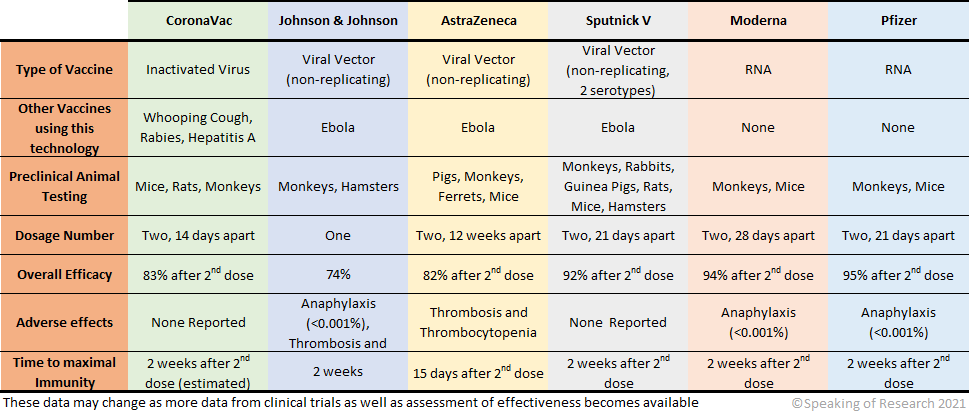Before promising vaccine candidates can be tested in humans, they must first be tested for safety and effectiveness in both small and large animal models, as required by the U.S. Food and Drug Administration.
NIAID: The urgency of the COVID-19 pandemic necessitated rapid vaccine development and testing. Fortunately, the National Institute of Allergy and Infectious Diseases (NIAID)’s decades-long support and conduct of coronavirus and vaccine research [under the leadership of Dr. Anthony Fauci as its Director] laid the groundwork for helping to develop a safe and effective COVID-19 vaccine in record speed.
Animal research plays a key role in developing successful vaccines for humans. Before promising vaccine candidates can be tested in humans, they must first be tested for safety and effectiveness in animals as required by the U.S. Food and Drug Administration. To do this, scientists first determine whether a vaccine candidate can stimulate an adequate and safe immune response. This important step is often conducted using small and then, potentially, larger animal models of disease [See Table below].
Mice are frequently used because they reproduce rapidly, have a well-characterized immune system and a defined genome. Some labs turned to mouse models of infection early in the COVID-19 pandemic only to find that mice don’t get infected with SARS-CoV-2. In order to infect cells, SARS-CoV-2 must bind to a human protein called ACE2. The human and mouse ACE2 proteins are different, and SARS-CoV-2 does not bind to mouse cells.
Scientists overcame this problem by generating mice that can express the human version of ACE2 and can therefore be infected with SARS-CoV-2. When these genetically modified mice are infected by the virus, they lose weight and become sick in ways that are similar to what happens when people are infected with the virus. Mouse models provided vital information about COVID-19 symptoms and its disease course and continues to be used by researchers to understand COVID-19 disease.
Syrian hamsters are another important animal model for COVID-19 because disease in those animals closely resembles the disease in humans. Additionally, older male hamsters develop more severe disease than young female hamsters, which reflects some of the differences seen in humans infected by SARS-CoV-2. Hamster models have contributed to the evaluation of investigational COVID-19 vaccine candidates, immunotherapies, and antiviral drugs.
Vaccine development for COVID-19 also benefitted from nonhuman primate studies. In assessing immunogenicity and protection of vaccines in pre-clinical animal models, nonhuman primates provide several advantages for clinical translation… Nonhuman primates are used during the later stages of vaccine development and typically build upon the knowledge accumulated in earlier small animal studies…
Animal studies will continue to provide vital information as new SARS-CoV-2 variants emerge and new questions arise as to the transmissibility of these variants, whether they are more harmful to people, and if they remain sensitive to available vaccines… Scientists will continue building on the lessons learned from COVID to develop animal models as part of our pandemic preparedness efforts to target other emerging or re-emerging infectious diseases. SOURCE…
RELATED VIDEOS:


